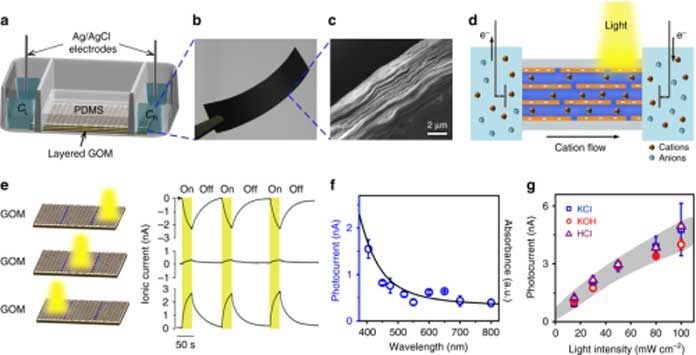Layered graphene oxide membranes (GOM) with densely packed sub-nanometer-wide lamellar channels show exceptional ionic and molecular transport properties. Mass and charge transport in existing materials follows their concentration gradient, whereas attaining anti-gradient transport, also called active transport, remains a great challenge.
In a new study by the scientists at the Chinese Academy of Science have demonstrated a coupled photon-electron-ion transport phenomenon through the GOM. They have developed a layered graphene oxide membranes (GOM) that promisingly showed exceptional ionic and molecular transport. They developed this GOM with sub-nanometer channels so that it can actively drive the ions in the anti-gradient fashion by asymmetric light irradiation.
During the work, scientists moved the cations against the electrolyte concentration fast enough then the diffusion under the asymmetric light illumination. Doing this, they obtained a credible mechanism that light can reduce the local electric potential on the GOM. The potential difference could be observed on the two sides of the channels. Then, the charged ions moved towards the applied opposite polarity.
Based on the assumption, scientists then built photonic ion switches (PIS), photonic ion diodes (PID), and photonic ion transistors (PIT) as the fundamental elements for light-controlled nanofluidic circuits.
By doping 2D nano-building-blocks with photosensitive elements or molecules, their photo-responsiveness can be further extended for scalable and more precise applications in, for example, active ionic sieving, artificial photosynthesis, and modular nanofluidic computation.
According to scientists, their work could pave the way towards remote, non-invasive, and active manipulation of the ion transportation in artificial 2D materials.
This work is funded by the National Natural Science Foundation of China and the National Research Fund for Fundamental Key Projects. The study is published in the journal Nature Communications.
